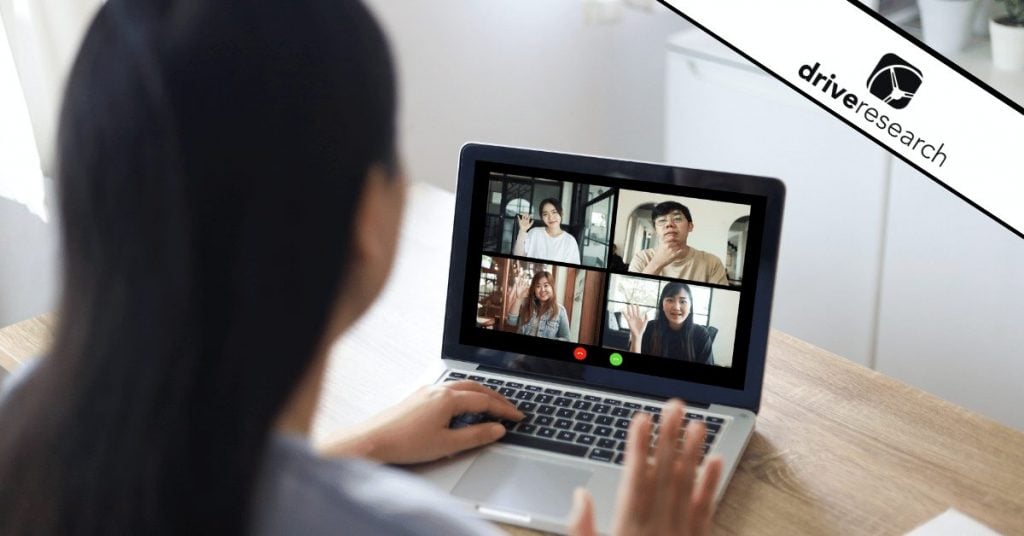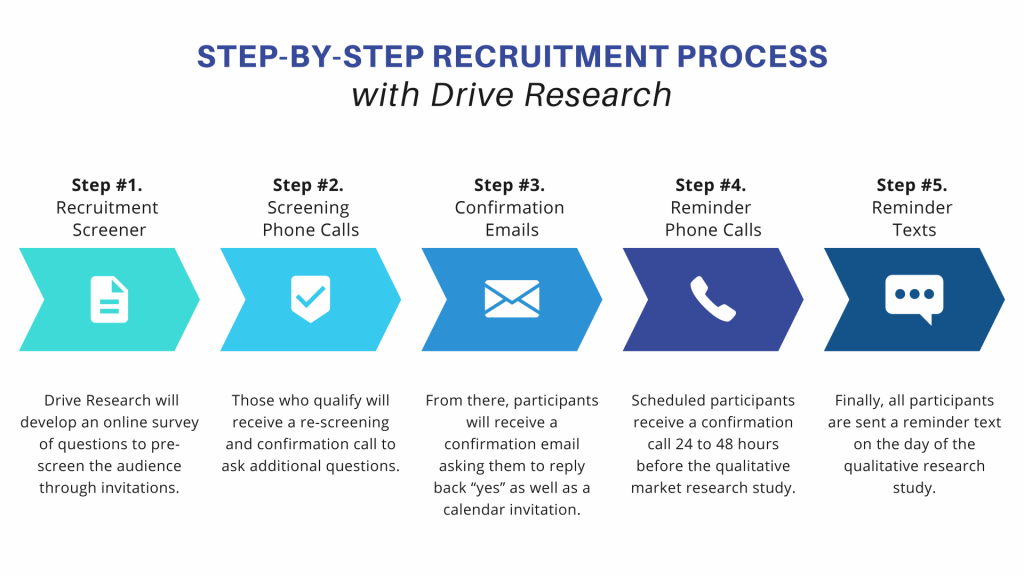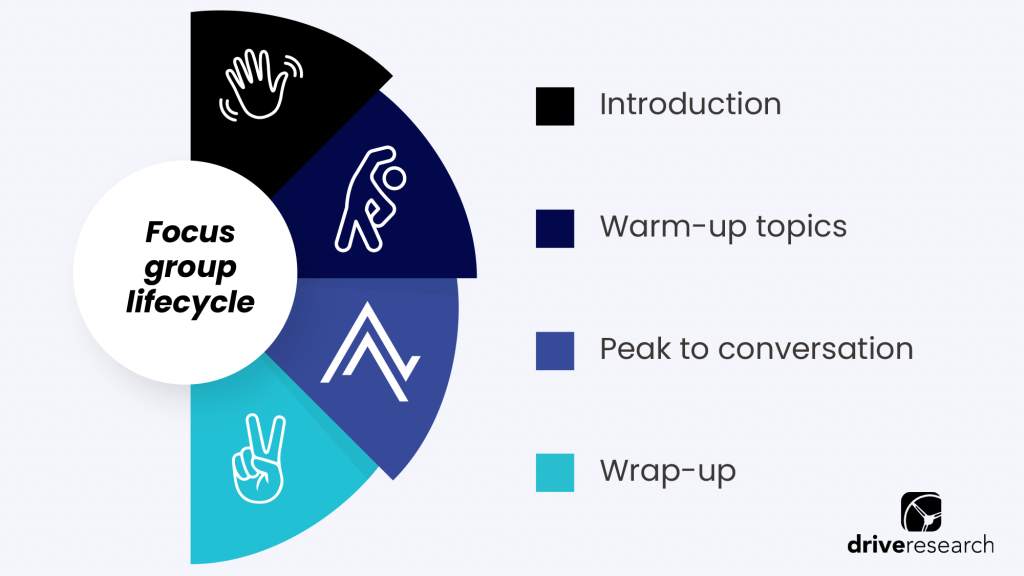
With the rise of video conferencing tools, traditional, in-person focus groups have evolved into a methodology that can be completed remotely.
As a result, conducting virtual focus groups has become increasingly popular among the market research community.
If you are still new to this type of market research, it can be helpful to learn a few virtual focus group best practices to assure your project goes off without a hitch.
In this blog post, our focus group company shares insider tips and tricks we’ve used throughout the years.
What is a Virtual Focus Group?
A virtual focus group involves a trained moderator leading a conversation with targeted participants through online conferencing platforms such as Zoom and Google Meet.
It allows organizations to collect in-depth feedback from a particular group of interest that ultimately guides business, marketing, and sales strategies.
There are many benefits of online focus groups, but perhaps the biggest advantage is that it is a low-cost alternative to in-person focus groups or in-depth interviews.
We cover this type of market research extensively in our Ultimate Guide to Conducting Online Focus Groups.
Learn more about virtual focus groups in the video below.
How Do Virtual Focus Groups Work?
The process of conducting a virtual focus group is similar to traditional, in-person group discussions. Though, the obvious differentiator being virtual focus groups are hosted via video conferencing tools.
The steps of conducting virtual focus groups include:
- Determine your objectives. Who is your target participants? What type of feedback do you want to collect?
- Create a recruitment screener. Create a brief online survey to qualify people before asking them to participate in the online focus group.
- Field the screener survey. Our qualitative recruiting company utilizes various sampling sources such as our in-house panel, third-party panels, and paid social media ads.
- Schedule participants. Based on the responses obtained through the recruitment screener, begin making re-screening phone calls to schedule participants for the virtual focus group.
- Host the virtual focus group. Listen in as targeted participants provide their feedback and answer pre-determined questions asked by a trained moderator.
- Report on the findings. What were the common themes among the group discussions? What surprised you most? What are the next steps for your business strategy?
- Take action with the results. A virtual focus group is most effective when organizations drive decision-making with the insights uncovered from the groups.
Recommended Reading: Traditional Focus Groups or Online Focus Groups – Which is Better?
Virtual Focus Groups Best Practices
While traditional, in-person focus groups are still a viable option for market research, virtual focus groups are here to stay.
Common virtual focus group best practices include:
- Using common video conferencing tools
- Allowing mobile participants to join
- Reinforcing participants join from private spaces
- Budgeting time for margin of error
Drive Research discusses these tips for online focus groups and many others below.
#1: Use common video conferencing tools
According to Owl Labs, around 62% of employees aged 22 to 65 say they work remotely at least occasionally.
That is no doubt a direct result of the COVID-19 pandemic causing many organizations to adjust their working-from-home policies.
As a result, many people have become more familiar with video conferencing tools such as Zoom, Microsoft Teams, and Google Hangouts.
For instance, Zoom alone has 300 million daily meeting participants – a 2900% increase since December 31, 2019.
When facilitating virtual focus groups, participants will have an easier learning curve if the discussion is held on a remote conferencing tool they know how to use.
A positive participant experience is key to gathering high-quality feedback and this starts with the platform you are commissioning the study.
Additionally, these platforms allow researchers to record the session, download a transcript, and other value-adds similar to in-person focus groups.
#2: Allow people to join from their mobile device
There are many devices participants can use to participate in online focus groups. Think desktops, laptops, mobile phones, tablets, and more.
Allowing participants to join the market research on the device they feel most comfortable using is an effective virtual focus group best practice.
Perhaps a large portion of your target audience doesn’t have access to a device other than a mobile phone.
You can shoot yourself in the foot by limiting participation to those who only have a laptop.
It is okay to share some guidance for mobile participants such as ensuring they have a strong connection and using headphones to prevent unwelcome noises.
#3: The recruiting process should feel genuine
In addition to a great moderator’s guide, a focus group would not be successful without qualified participants.
When recruiting participants for online focus groups, a great recruiting team will make communication feel genuine and personalized.
This includes the screening call, confirmation email, reminder phone call, and reminder text.

The market research team must also assess whether the contact would be a good fit for a focus group.
Generally, this includes:
- Being forthcoming when answering questions
- Showing interest in participating
- Willingness to expand or further explain ideas
- Being polite and courteous to others
#4: Remind, remind, remind
Creating calendar invitations is not just for B2B relationships. In fact, sending calendar invitations is a huge part of our process of recruiting participants for market research.
Because most email platforms sync with users’ calendars, we can automatically remind them when the session is about to start.
In addition to calendar invites, our online focus group company also recommends making reminder phone calls the day before the study and sending reminder texts the morning of the study.
#5: Reinforce the need for private spaces
A strong benefit of in-person focus groups is that a moderator has access to a captive audience.
Participants sit in a focus group facility that is intentionally designed to be distraction-free.
However, when conducting focus groups virtually, participants can become distracted by their phones, people around them, outside noises, and more.
Therefore, when finding participants for remote focus groups, it’s important to ask that they find a quiet, private space during the duration of the discussion.
Examples of private spaces best for virtual focus groups include:
- Bedroom
- Private offices
- Home basements
- Walk-in closets
Wherever participants can shut the door and escape from any distractions is best.
#6: Budget time for margin of error
Although these virtual focus group best practices can help eliminate most challenges, it’s almost impossible to predict any technical difficulties.
For this reason, Drive Research always asks participants to log in 5 to 10 minutes before the group study.
Adding this window allows participants and moderators to fix any unexpected technical issues such as software updates or a poor wi-fi connection.
Doing so means you can start the remote group discussion without cutting into the allotted time.
#7: Set the tone and support engagement
One of the worst things a moderator could do during a focus group is to complain…about anything.
Rather than complaining or sounding low-energy, find ways to sound eager and energized.
Having a bad day? Fake it until you make it. Seriously. Participants will notice, and it will pay off.
Set the tone by being welcoming, excited, and appreciative of participants’ time. Remember, if the recruiting team was successful, all participants should be excited about the focus group.
Also, consider starting with a warm-up question like:
- “If you could have dinner with anyone, who would it be and why?”
- “What’s your favorite movie?”
Warm-up questions like this help the moderator build rapport with participants, but it also helps participants get to know each other before diving into key questions.
It is a key part of the focus group lifecycle.

#8: Personalize the experience
When conducting a focus group in person, it’s easy for the focus group moderator to point to a participant to ask for their feedback.
But, this luxury becomes non-existent for remote methodologies.
Therefore, our virtual focus group company recommends calling participants by name to easily guide the group discussion.
- “Chris, what do you think about the design of the logo?”
- “Tim, do you agree with Tim’s comment?”
- “Ashley, can you expand on your feedback when you said the logo was too boring?”
Using participants’ names not only personalizes the experience but also helps to keep the discussion moving forward with no awkward pauses or people talking out of turn.
#9: The fewer participants, the better
A great virtual focus group best practice to keep in mind is limiting the number of participants.
While in-person focus groups often contain 8 to 12 participants, that number becomes smaller when conducting focus groups online.
When conducting virtual focus groups, Drive Research recommends recruiting 4 to 6 participants to allow for a high engagement from each participant.
Anything more and people start to talk over one another, making it difficult to hear feedback from everyone.
#10: Show appreciation before, during, and after the virtual focus group
Lastly, but most importantly, it’s important to thank participants throughout the focus group.
A great moderator will take the time to personally thank each participant at the beginning of the group, for sharing or expanding on their thoughts during the group, and at the end of the focus group.
Again, being grateful and appreciative helps create an effective and engaging experience for participants.
#11: Send rewards ASAP
Last, but not least: pay your rewards immediately.
This best practice applies to all market research studies, not just virtual focus groups.
For the sake of remote market research methodologies, our focus group company recommends using eGift cards. Great options include Visa and Amazon gift cards.
In fact, according to our studies, a $100 Amazon gift card was the most popular market research incentive according to 80% of respondents.
Offering a popular reward can help make recruitment a breeze – but paying participants immediately will help them return for more studies.
Contact Our Virtual Focus Group Company
Drive Research is a full-service market research company specializing in traditional in-person and online focus groups. Our team can help recruit, moderate, and report on key takeaways from the virtual focus group discussion.
To learn more about our services, contact Drive Research today!



